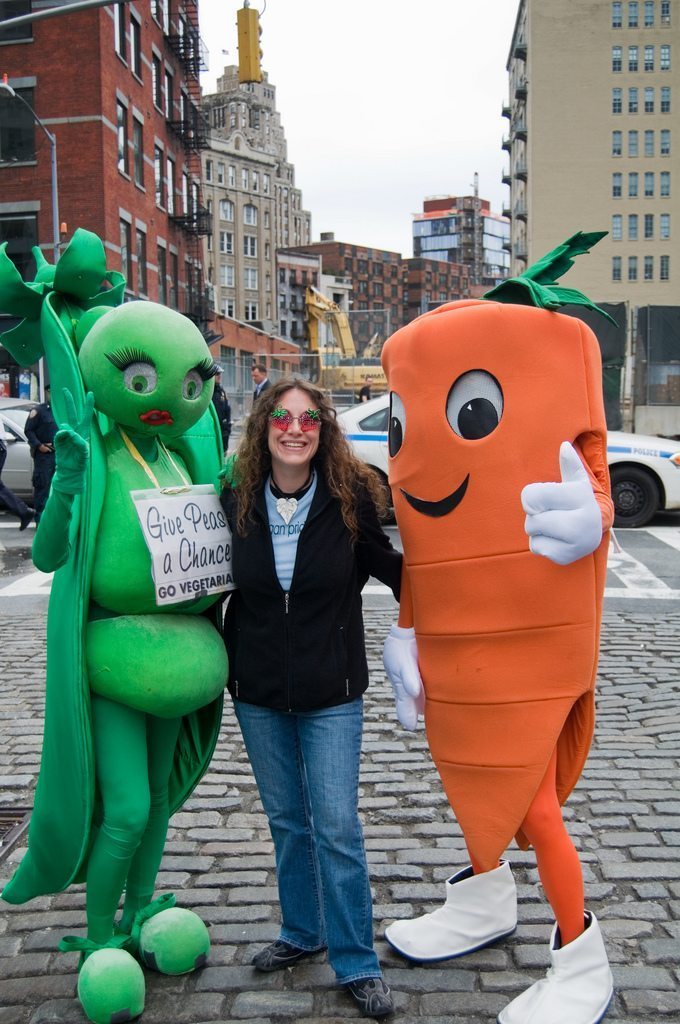Putting Diabetes in its Place–The Back Seat
To most people, I’m a health food nut. I buy almost all my food and meals at Whole Foods, and have shopped at health food stores since my college days. I’ve been vegetarian for nearly 40 years, and have never added sugar or salt to anything. Eating flour tortillas and white bread are as appealing to me as chewing on a wad of cotton. Although I owned a tapas bar in South America, I pretty much stopped drinking alcohol (and soda) before I even reached today’s legal drinking age.
For those frequent solo business trips, rather than a fancy local restaurant, I prefer to pick up a meal at Whole Foods. Their locations in Los Angeles, Chicago and New York City are programmed in my brain, just like the birds that fly south but always return home to nest.
I attribute my dietary practices, or preferences, to the fact that I grew up in a diabetic household. All the breads and cookies baked at home were made with whole grains and were sweetened with crushed pineapple or bananas. Our peanut butter and jelly sandwiches were made with 100 percent freshly ground peanuts and topped with 100 percent fruit spreads. My mother was a very educated diabetic whose article on her switching to insulin was published in the Diabetes Educator in 1979.
Additionally, for the last 15 years, I have periodically conducted health education PR, much of which focused on diabetes and its prevalence within the Hispanic community. In addition to having worked for multiple pharmaceutical companies on diabetes outreach over the years, I spearheaded many wellness campaigns for clients ranging from the San Antonio Metro Health Department to LULAC – where diabetes is always top of mind. Finally, representing several food clients, I encouraged a focus on nutrition. Having crafted dietary message points and traveled with nutritionist spokespeople, I felt I was educated, just like my mom was about the “silent killer.”
Yet, despite my mother’s conscientious monitoring of her blood sugar levels and her diet, diabetes killed her. This woman, who seemed to attend all the diabetes workshops available in my hometown, had a pain in her toe. She never went to the doctor for a diagnosis or treatment, who may have told her she had painful diabetic peripheral neuropathy, which now can be treated with oral meds. So, as is often the case with diabetics, gangrene set in. First a toe amputation. Then the leg. Then death. All within a week or so.
Just like my mother, I thought I knew everything and was sure I’d avoid its grasps. I get the fasting blood sugar test yearly, practice yoga and meditation daily (stress greatly elevates glucose levels) and I even recently moved toward a vegan diet, aware that in a closely monitored trial, those who were on a three-month low fat vegan diet had 59 percent lower glucose levels than those who followed the ADA recommended diet.
Knowing I was at risk I asked my doctor for the A1C blood test, rather than traditional fasting blood sugar. A1C monitors glucose levels over the prior three months and can be used to detect pre-diabetes which is not uncommon, but is extremely under diagnosed. So it was a shock when the doctor’s office said my A1C levels were above normal, labeling me pre-diabetic. I became one of the 57 million Americans that the American Diabetes Association, in 2007, estimated were pre-diabetic. I’m lucky. I know. Most don’t. And a fellow health specialist PR person insisted I get the A1C test. Thanks, Henry.
Hispanics are twice as likely to have diabetes as non-Hispanic whites, partially due to cultural associations with foods, beverages, and mealtimes. Living in Texas, I see frequent consumption of supersized margaritas, beers, turkey legs or puffy tacos. Frito pies and deep fried twinkies are even on the menus and sugared Indian fry bread or sopapillas are snack favorites at our fairs. As a result, obesity is rampant in our Hispanic community, and Type 2 diabetes is hitting children like never before in South Texas and beyond.
There is no escape from your genetic makeup, but research has proven that diet and exercise contribute to 60 percent of effective maintenance of proper blood sugar levels. I consider if I hadn’t had the lifestyle I was following, I would certainly be on insulin, just as my mother was at my age.
While I always had a very healthy diet and lifestyle, since my diagnosis I have significantly cut back on all carbohydrates and restrict my level of fruit to no more than two portions daily, preferably berries which have the lowest glycemic index. Diet does make a difference. My blood sugar level dropped so much that my sister suggested that the initial test was erroneous. It wasn’t. I recognize the level of carbohydrates I ate as part of a vegetarian diet were probably not optimal. Now, I’ve replaced carbs with plant proteins wherever possible. No, it’s not always easy to refrain from eating and drinking at parties or at non-vegan friendly restaurants. But it’s worth the effort.

Your article helped me a lot, is there any more related content? Thanks!
Your article helped me a lot, is there any more related content? Thanks!